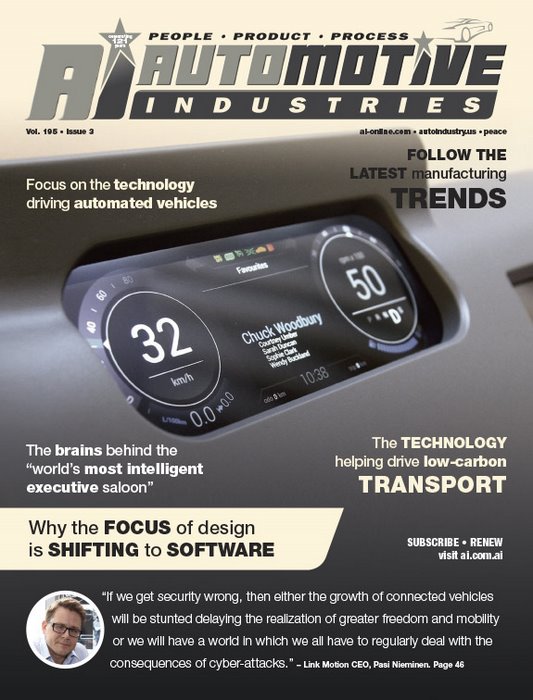
Before the 1980’s vehicles were largely mechanical and any new features or improvement in performance was achieved through better or more complex mechanical systems.
The 1980s saw the introduction of electronics with the ECU and CAN bus transforming the mechanical into the electrical. Electronics drove feature development for almost three decades. This decade has seen the rise of software as a key driver in the development of new features and vehicles. Because of the complexity, cost and development time, electronics are no longer sufficient to keep up with the pace of change. Today it is software that is driving change to the industry as we know it. Software’s most visible entry into vehicles has been through infotainment systems. In the initial move from electronics to software-driven infotainment systems, the technology was not very sophisticated, and the performance and safety requirements weren’t high.
Traditional automotive suppliers were able to continue focusing on electronic hardware development while using simple software stacks to build products. According to Tero Marjamäki, Head of Automotive at The Qt Company, it has become increasingly clear that this model has failed to keep up with the growth in software complexity.
Software companies are looking at the automotive industry and seeing the challenges facing traditional suppliers as opportunities for themselves, he says. Qt Company’s technology has been selected by Link Motion from Finland for its user interface in Link Motion’s drive to shake up the automotive HMI space, according to Link Motion’s CEO, Pasi Nieminen. Specialist automotive software companies and software specialist units within the traditional suppliers will have a larger role in the development of vehicle features and technology, he believes. At the same time, digital user experiences are entering every screen and beyond to cloud-based backends in modern vehicles.
This will also set new requirements for software solutions. “It is important that OEMs are able to build their brand identity into a digital world,” comments Marjamäki. “There needs to also be flexibility in the systems, allowing the customers to select not only the hardware but also the cloud services for advanced use cases -fitting the strategies of automakers.” Qt is used across more than 70 industries, from 3D printers to consumer electronics and automotive. The development framework enables the sharing of best practices and horizontal cooperation for the benefit of developers everywhere, he adds.
Automotive Industries (AI) asked Pasi Nieminen, CEO of Link Motion, to introduce readers to the company’s products.
Nieminen: As a technology company we make products, but as an automotive supplier we deliver solutions. So I like to say we are a product-solution company.
Our current core product is a connected vehicle computer which combines hardware that is optimized for our software and a complete software stack. Our main solution combines what are traditionally four separate units into one integrated software and hardware solution.
These are the instrument cluster unit, infotainment head unit, telematics unit and the communications unit. This presents some challenges when working with OEMs as our solution crosses a number of internal divisions within OEMs, such as different teams responsible for the infotainment system and the instrument cluster. Our chief design goal is something that is very hard to see: security. We are at the beginning of a world in which all vehicles are connected. If we get security wrong, then either the growth of connected vehicles will be stunted delaying the realization of greater freedom and mobility or we will have a world in which we all have to regularly deal with the consequences of cyber-attacks. Security is not a feature that can be added at the end of the development cycle.
Security is firstly an attitude that affects everything you do and permeates all your decisions. Only then can you create an integrated software and hardware system that is secure.
AI: Why did you choose Qt technology for your user interface?
Nieminen: We already had extensive experience using Qt in embedded devices such as mobile phones and tablets and we were comfortable with both its technical performance and the rich 2D and photo realistic 3D user experiences that it enables us to create.
Overall performance and stability are very important to us so when we chose Qt technology for our user interface for our connected computing solutions we already knew that we could rely on it to deliver the high performance we wanted for our mission critical HMI. Our solutions run multiple displays with information sharing between them so a modern multi-process architecture is another hard requirement that Qt fulfills. Link Motion is very focused on building value on top of open source software and Qt has a big following in the open source community both in Finland and globally. Knowing we can easily find developers with Qt experience was another reason for us to go with Qt technology.
AI: How is Qt Automotive suite going to affect your business?
Nieminen: We are delighted to see the Qt Company and its partners Pelagicore and KDAB release the first generation of the Qt Automotive Suite. We already have our own middleware however we will be refactoring it to use the Qt Automotive Suite so as to get the long-term benefits from being part of a standard platform. We have already contributed an OpenVG graphics plugin to Qt Company and we are looking other opportunities for our contribution. This should be the way all members of Qt ecosystem look at the offering – improving by own contribution. By creating a standard suite of tools Qt Company is enabling us to shorten future discussions with customers. The more that is standardized and thus the customer understands already, the less we have to explain.









More Stories
Towing Services Explained: 6 Key Facts You Need to Know
Environmental Factors That Influence Ceramic Coating Choices
Professional vs. DIY Tinting: What You Should Know